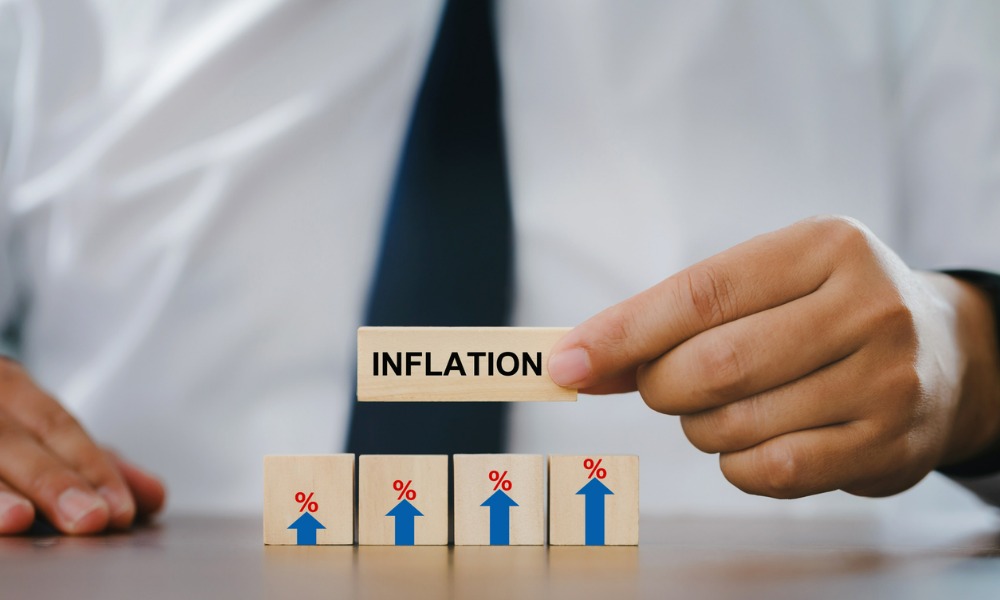

Federal Reserve Chair Jerome Powell again stressed the central bank must ensure tariffs don’t trigger a more persistent rise in inflation.
“Our obligation is to keep longer-term inflation expectations well anchored and to make certain that a one-time increase in the price level does not become an ongoing inflation problem,” Powell said Wednesday in the text of a speech prepared for the Economic Club of Chicago.
Powell said policymakers would balance their dual responsibilities of fostering maximum employment and stable prices, “keeping in mind that, without price stability, we cannot achieve the long periods of strong labor market conditions that benefit all Americans.”
US stocks extended losses and the dollar fell following Powell’s remarks. Yields on the 10-year US Treasury note declined modestly.
The remarks reinforce a message Powell has repeatedly emphasized, including most recently on April 4: Fed officials are in no hurry to change the central bank’s benchmark policy rate.
As they seek greater certainty about how President Donald Trump’s economic policies, especially on trade, will affect the US economy, Powell and other Fed policymakers have expressed support for holding rates steady.
“For the time being, we are well positioned to wait for greater clarity before considering any adjustments to our policy stance,” Powell said.
In a question-and-answer session that followed his speech, Powell said he expects unemployment and inflation will each be headed away from the Fed’s goals “probably for the balance of this year.”
The Fed chair acknowledged that a weakening economy and elevated inflation could eventually bring the central bank’s two goals into conflict.
“We may find ourselves in the challenging scenario in which our dual-mandate goals are in tension,” he said. “If that were to occur, we would consider how far the economy is from each goal, and the potentially different time horizons over which those respective gaps would be anticipated to close.”
Trump continues to dramatically shift his plans for imposing new tariffs, leaving businesses, consumers and global financial markets on edge.
He backtracked on so-called reciprocal tariffs announced on April 2, after the plans sent markets into turmoil. He pressed forward with a baseline 10% global tariff and duties in excess of 100% on China, then sent mixed signals on creating exemptions for smartphones and other technology products. He’s also imposed tariffs on auto, steel and aluminum imports, and signaled pharmaceuticals and semiconductors may be next.
Many analysts estimate the tariffs will boost inflation and slow economic growth, a view Powell shares. Inflation, as measured by the Fed’s preferred gauge, was 2.5% in the year through February, well down from its post-Covid peak but still stubbornly above the Fed’s 2% target. In the speech, Powell said estimates suggest that measure will come in at 2.3% in March.
Powell repeated Wednesday that the level of the tariff increases announced so far is significantly larger than anticipated. He added that the duties are highly likely to generate at least a temporary rise in inflation, but that the inflationary effects could also be more persistent.
“Avoiding that outcome will depend on the size of the effects, on how long it takes for them to pass through fully to prices and, ultimately, on keeping longer-term inflation expectations well anchored,” he said.
Fed officials cut interest rates three consecutive times at the end of 2024, but started 2025 signaling they would take a more patient approach in the face of sticky inflation. Many officials have doubled down on that thinking, emphasizing the need to minimize the risk that tariffs lead to a persistent rise in inflation and Americans’ long-term expectations for price growth.
Meanwhile, layoffs and unemployment, at 4.2% in March, remain low. US employers added 228,000 jobs last month, exceeding forecasts.

Catch-up contributions, required minimum distributions, and 529 plans are just some of the areas the Biden-ratified legislation touches.

Following a similar move by Robinhood, the online investing platform said it will also offer 24/5 trading initially with a menu of 100 US-listed stocks and ETFs.

The private equity giant will support the advisor tech marketing firm in boosting its AI capabilities and scaling its enterprise relationships.

The privately backed RIA's newest partner firm brings $850 million in assets while giving it a new foothold in the Salt Lake City region.

The latest preliminary data show $117 billion in second-quarter sales, but hints of a slowdown are emerging.
Orion's Tom Wilson on delivering coordinated, high-touch service in a world where returns alone no longer set you apart.
Barely a decade old, registered index-linked annuities have quickly surged in popularity, thanks to their unique blend of protection and growth potential—an appealing option for investors looking to chart a steadier course through today's choppy market waters, says Myles Lambert, Brighthouse Financial.
